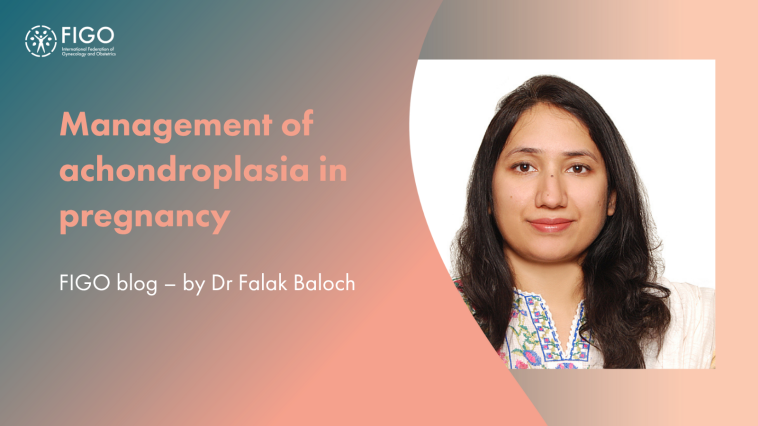Management of achondroplasia in pregnancy

My journey in women’s health began over a decade ago in Pakistan. I obtained fellowship from the College of Physicians and Surgeons Pakistan (FCPS) and membership of the Royal College of Obstetricians and Gynaecologists, UK (RCOG). Since graduating from medical school in 2014, I’ve been privileged to serve women through all stages of life – most recently as a Senior Clinical Fellow in the NHS, UK. My key interests include high-risk obstetrics, minimal access surgery and advancing maternal health in resource-limited settings.
Achondroplasia, the most common form of skeletal dysplasia, presents unique challenges in pregnancy due to its impact on bone growth and thoracic development. Though rare, these cases require highly individualised and multidisciplinary care to optimise maternal and foetal outcomes.
In my clinical experience, pregnancy in women with achondroplasia comes with unique considerations due to the condition’s effects on bone growth, pelvic structure and respiratory capacity. These women are more likely to face challenges such as preterm labour, hypertension or the need for a caesarean delivery. But while the medical risks are important, there is a need for holistic, team-based support.
My personal approach begins with pre-pregnancy or early antenatal counselling and early risk assessment. Respiratory and cardiac evaluations help identify potential complications stemming from thoracic restriction or cardiopulmonary compromise. Foetal medicine specialists and radiologists contribute to detailed surveillance and anomaly scanning. Delivery planning, usually favouring elective caesarean under controlled conditions, is carried out with input from anaesthesia and neonatal teams.
These pregnancies highlight the importance of coordinated multidisciplinary care, respectful communication and shared decision-making. Involving obstetricians, anaesthetists, physicians, foetal medicine, neonatologists, midwives and allied health professionals ensures a proactive and cohesive approach. The rarity of the condition means that most clinicians may only encounter a handful – or even a single – case throughout their careers. In my 12 years of clinical practice, I have managed just one case, which highlights the limited exposure and consequent lack of confidence many healthcare providers face in managing these pregnancies.
Critical gaps exist in awareness, antenatal care planning, multidisciplinary coordination and delivery protocols for such patients. There is often uncertainty around the timing and mode of delivery, appropriate anaesthetic approach and individualised thresholds for interventions such as massive obstetric haemorrhage (MOH) management. Additionally, standard antenatal risk assessments do not always accommodate the anatomical and physiological challenges unique to demographics, such as restrictive lung disease or cardiopulmonary risks.
Guidelines tailored to skeletal dysplasias in pregnancy are scarce, and most available recommendations are based on isolated case reports or expert opinion. There is an urgent need for evidence-based protocols, including anaesthetic guidelines, foetal monitoring strategies and postpartum care recommendations.
Healthcare providers across regions and specialties should be supported with evidence-based guidance, educational resources and opportunities to share clinical experience. Strengthening these efforts can help address existing gaps and promote consistent, high-quality care regardless of geographic location.